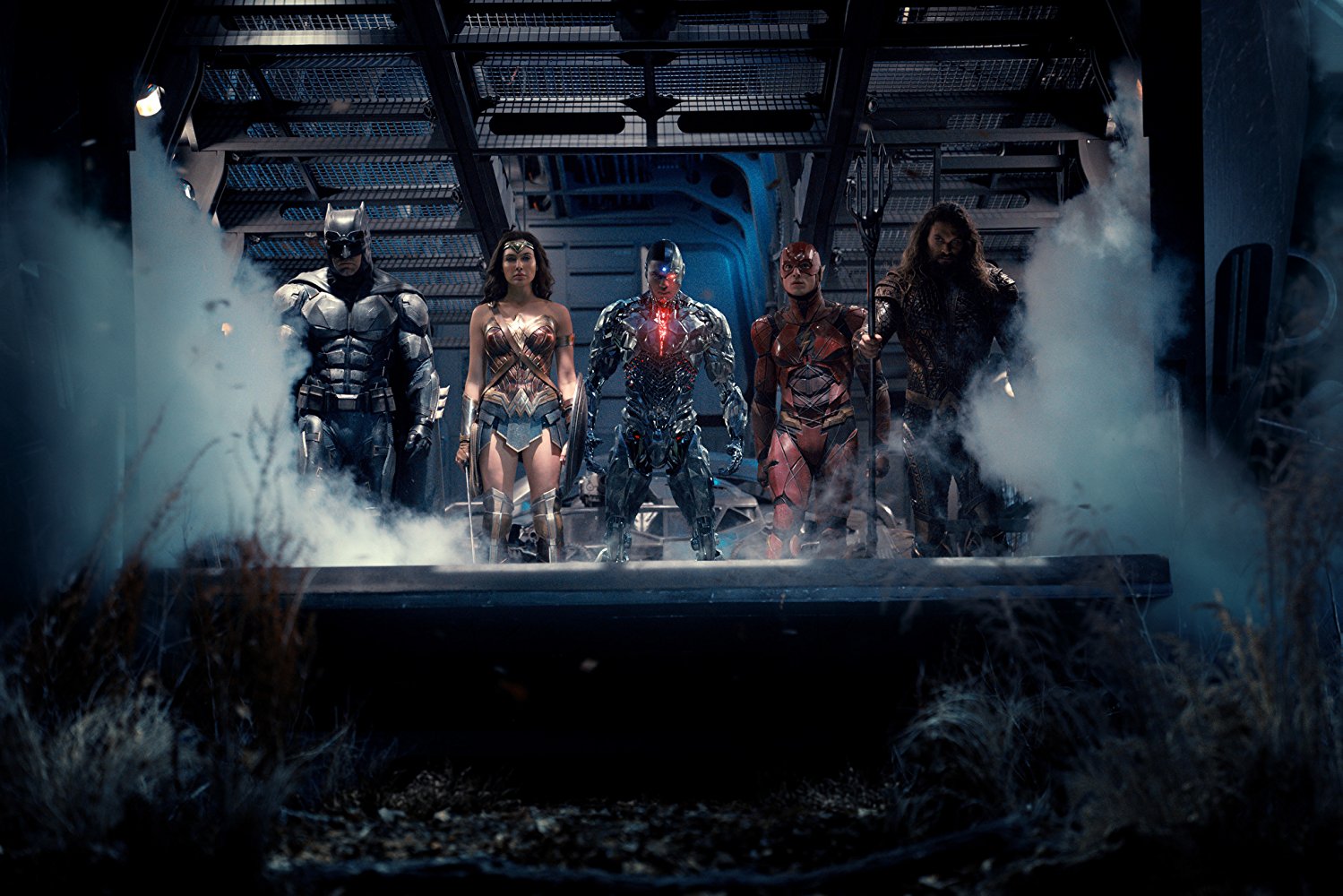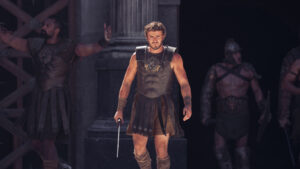Few films have hit theaters with the same production problems as Justice League. Indeed, any comic fan would have been concerned with the litany of bad news coming out of the troubled production process: Joss Whedon was completely retooling it in post-production after director Zack Snyder stepped down; Ben Affleck wanted out as Batman; the film was caught between two competing visions. Now that the film has actually hit theaters, it’s fascinating to watch on a number of levels: as an ensemble film, as the culmination of four films of world-building, and as the product of a disastrous production process. Justice League isn’t the masterpiece DC fans were hoping for, nor is it the trainwreck that many critics are claiming. It falls somewhere in between: a movie neutered by an arduous post-production process that manages to deliver great thrills and character moments while failing to craft a coherent or compelling narrative.
The film starts in the wake of Superman’s death at the end of the preceding Batman v. Superman: Dawn of Justice. This opening presents an opportunity for the filmmakers to build on themes that were explored in prior DC films, but any thematic complexity is pushed out of the way in favor of introducing a bevy of new characters within a lean runtime of just two hours. The audience is told about a world in chaos without the presence of Superman, although outside of a couple of scenes at the beginning, we never really get a great sense of any sort of imminent collapse. It’s undoubtedly a missed opportunity for the story to have some real meat.
Anchoring the film from the get-go are Ben Affleck and Gal Gadot as Bruce Wayne and Diana Prince, respectively. Both actors stood out as highlights of Batman v. Superman and Gadot triumphed in Wonder Woman, and they’re both game in Justice League. Affleck’s beleaguered Bruce Wayne is given a bit more punch and life, and even gets a couple of good one-liners. The character is certainly a more traditional Batman from the one audiences were introduced to in Batman v. Superman, which builds on his character arc from the end of that film. It’s a shame that Affleck looks like he’s on the way out, because his Bruce Wayne deserves a solo film. Gadot’s Prince gets some of the best character work in the movie. The film is not shy about putting her front and center in several action scenes, and she gets the most screentime behind Affleck. As the two work to assemble the team, their interplay ranges from tense to funny to even affectionate at some moments, as it is apparent that the two characters are total equals.
Once the league gets assembled, it becomes clear that the film’s biggest strength comes from its titular team. Jason Momoa’s Aquaman gets some of the better action moments, and Snyder has an ingenious sense of depicting the physics of the underwater world of Atlantis. It’s never clear exactly what his powers are, and he doesn’t get much characterization beyond “cool surfer dude,” but he’s a ton of fun in the role and shows a lot of promise for his solo film next year. Ezra Miller provides plenty of comedic relief as the Flash, and he also gets a surprising amount of effective character work. The one-liners do grow tiresome and feel too forced at times, but as with Atlantis, the film has a number of clever ways of depicting the Flash’s speed. Ray Fisher’s Cyborg is the weak link of the ensemble simply because he’s the most unfamiliar character to the audience and his performance gets lost under layers upon layers of CGI.
Surprisingly enough, the character who shines the most in the film is the one who’s been completely absent from any advertising. It was no secret to DC fans that Superman was returning, and once he is resurrected, he easily becomes the best part of the film. Without giving too much away, the film plays on pre-existing conflicts between Superman and the rest of the League, before having the Man of Tomorrow ascend to heroic heights not seen since Christopher Reeves donned the cape. The most audience pleasing parts come during these moments, and seeing Cavill’s Superman fully realized is worth the price of admission alone.
Justice League is at its best when the team is together. The characters have a chemistry that works extremely well, and you can’t help but want more smaller, character moments littered throughout an otherwise frenetic film. Supporting characters include returning characters like Amy Adams as Lois Lane and Diane Lane as Martha Kent, both of whom do good work in limited screen time. New characters are introduced haphazardly without having much of an impact on the story. J.K. Simmons looks promising as the new Commissioner Gordon, while Amber Heard’s Meera gets a memorable action beat to set her up for Aquaman’s solo outing. These characters don’t leave enough of an impact to derail or save the movie, but they do hint a promising larger DC cinematic universe.
It’s everything outside of the League that makes Justice League stumble, though. Steppenwolf, the film’s villain who is portrayed via ugly-looking motion-capture by Ciaran Hinds, is completely forgettable. The story involves his desire to find three Mother Boxes hidden around Earth in order to combine them and form the Unity, some sort of entity that will destroy the world to make it ready for Darkseid, the DC universe’s big bad. The story is refreshingly simple and straightforward, and contrasts with the convoluted nature of Batman v. Superman’s story, but the specific plot mechanics don’t really work. It seems to lurch from story point to story point without much connection between scenes, which is perhaps a result of the abridged running time. Steppenwolf doesn’t get much to do besides jump around and attack people with his axe while spouting stereotypical evil villain dialogue. With DC’s incredibly deep lineup of antagonists, it’s extremely disappointing that the Justice League couldn’t face off against a better villain.
It’s a testament to Joss Whedon’s talent as a storyteller that it isn’t immediately apparent that Justice League is the product of two very different directors. There are few moments where it’s blatantly clear that the scene wasn’t filmed by Snyder, and Snyder’s tendency for visual flair does come through in certain moments, despite the fact that it is obvious that his original vision for the film has been compromised by studio demands. The film certainly could have used 15 to 20 more minutes of connective tissue to make the plot flow more smoothly, and it appears that Whedon was brought in more for his quippy style of writing than his ability to smooth out the rougher plot points. Audiences who were hoping to get the best of Snyder’s visual senses and Whedon’s storytelling abilities don’t quite get either, but the two sensibilities also don’t clash enough to derail the film.
Perhaps what is most underwhelming about Justice League is that it doesn’t commit enough to one vision to be a satisfying experience. The constant quipping and lighter tone makes the film seem like it’s clearly aping Marvel’s formula, while its allusions to prior DC films connects it to the DC movie world’s previous styles. But there isn’t a clear idea behind Justice League in the same manner that previous DC films had, making it a somewhat disappointing conclusion to the four previous films. It isn’t obvious where DC will go after Justice League, but it is apparent that the universe has moved away from darker fare towards more crowd-pleasing films. The move towards Marvel formula proves more disappointing than anything else, and makes the film feel like a squandered opportunity to do something great with the superhero genre. But if DC can find the balance between greater ideas and characters, as Wonder Woman did so brilliantly, then there is still hope for the World’s Finest to find their footing in the increasingly saturated world of superhero films.





